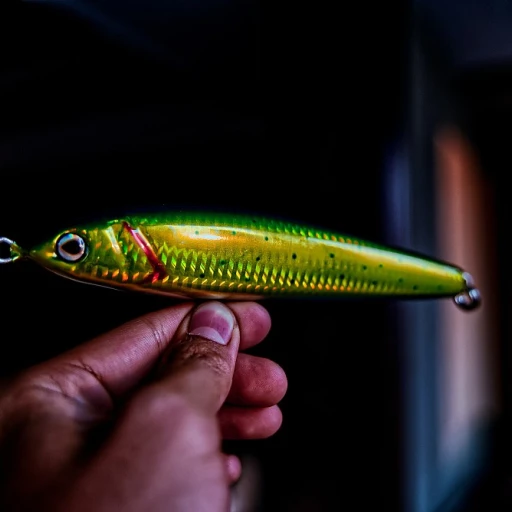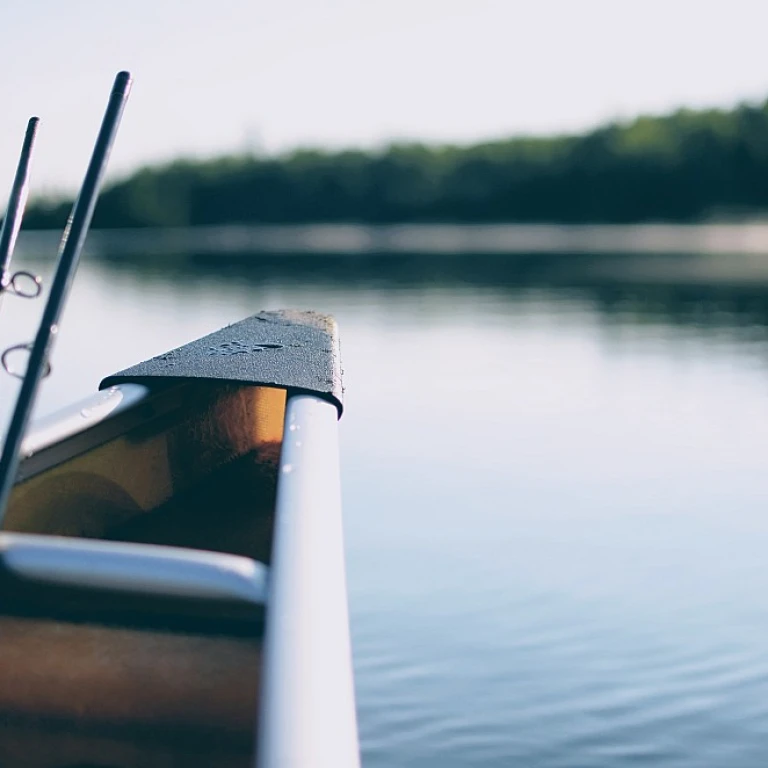Understanding Caddis Fly Patterns
Decoding the Complexity of Caddis Fly Patterns
Understanding the intricacies of caddis fly patterns is an integral part of any angler's journey. With their varied structures and functions, caddis flies are arguably the best dry flies to mimic when targeting trout. These patterns are inspired by the natural lifecycle of the caddis pupa and are essential tools for fly fishing.
Though patterns like the cdc caddis and parachute caddis may seem daunting at first, recognizing the role of hair materials such as elk hair and deer hair can simplify the process. These hairs, known for their buoyancy and lightness, enable the flies to float delicately on the water surface, imitating an emerging caddis. The soft attributes of these materials, alongside a tactical use of hackle and wing designs, can make a significant difference in enticing fish.
In the art of fly tying, deer hair caddis patterns stand out for their realism and effectiveness. The finest materials offer a range of textures and buoyancies, contributing to the versatility of these flies. As you delve deeper into the patterns and practice tying them yourself, you'll uncover how each element—from hair wing structures to body styles—plays a role in their success rate.
For more insights into the pivotal role of hair, consider exploring the
versatility of elk hair in fly tying. By familiarizing yourself with different caddis patterns and their unique functions, you're setting the foundation for enhanced fishing expeditions.
Popular Caddis Fly Patterns
html
Exploring Caddis Fly Patterns for Successful Fly Fishing
Caddis fly patterns represent a vital component of a fly fisherman's arsenal. Understanding the most popular types and when to use them can significantly enhance your success on the water.
- Dry Caddis Flies: These patterns are designed to imitate adult caddis sitting on the water's surface. They are often crafted with deer hair or elk hair for buoyancy. The versatility of elk hair is particularly useful here, as it helps keep the fly afloat while mimicking the natural appearance of the insect. One of the arguably best dry flies for trout fishing is the Elk Hair Caddis, known for its simplicity and effectiveness.
- Soft Hackle Caddis: Featuring a more subdued profile, soft hackle patterns excel in imitating emerging caddis pupae below the surface. Their soft, flowing fibers replicate the movement of caddis trying to reach the surface, making them an attraction for hungry fish.
- Parachute Caddis: The parachute style offers enhanced visibility and stability. The best dry hackle used in these patterns ensures these flies can land softly on the water, making them enticing to selective fish.
- CDC Caddis: Incorporating CDC feathers, which possess excellent moisture-repellent properties, these patterns are designed for delicate presentations in still or slow-moving waters. This enhances their effectiveness as dry flies during challenging conditions.
- Caddis Pupa Patterns: To imitate the transitional stage of a caddis fly, these patterns are crafted with a focus on translucence and natural movement. Using materials like hare ear or soft hackle, these representations are ideal when fish are focused on sub-surface feeding.
Choosing the right caddis pattern is crucial to your success. Tailoring your fly selection to the specific conditions and matching the hatch will help you entice even the most elusive trout. By understanding these popular caddis patterns, you can better prepare for diverse fly fishing conditions and improve your chances of a fruitful catch.
Essential Materials and Tools for Crafting Effective Caddis Flies
Creating high-quality caddis fly patterns requires not only skill but also the right materials and tools. As recreational fishermen know, each component plays a crucial role in the fly’s performance on the water, determining how successful your fly fishing will be. In this section, we will outline the primary materials and tools you need to start tying your own caddis flies.
Firstly, the type of hair used in these patterns is key. Deer hair, including both deer and elk, is popularly used to form the body and wing components in flies such as the classic Elk Hair Caddis. This material is not only buoyant, aiding in the creation of effective dry fly patterns, but also provides a natural and realistic appearance that trout find hard to resist.
Additionally, soft hackle, when used as a caddis pupa or simply added to your dry fly patterns, works wonders in mimicking the natural movements of a fly in the water. Soft hackle offers a different presentation, enhancing the overall effectiveness of your patterns.
When it comes to the tools required, a quality fly tying vise is an essential investment. It holds the hook securely while you work on detailed sections such as the cdc elk wing or parachute caddis. This stability allows you to focus on achieving the best form and symmetry.
Beyond the vise, having a selection of specialized scissors, hackle pliers, bobbins, and hair stackers ensures you can trim and shape the caddis flies to perfection. With such tools, even the intricacies of cdc caddis or hare ear can be tackled with ease.
Finally, when selecting hooks (the foundation of your pattern), opt for those designed for fly fishing that accommodate dry flies, ensuring they support the overall structure of the fly.
When all these elements come together, the craftsmanship of your caddis flies will undoubtedly improve, readying you for successful trips to fish for trout. For further insights on selecting the right components, visit this comprehensive guide on
choosing the right support for your outboard engine. Crafting your own caddis flies not only enhances your fishing experience but also gives you a sense of achievement as you create the arguably best fly patterns tuned to your fishing environment.
Techniques for Tying Caddis Flies
Mastering the Techniques for Tying Caddis Flies
Crafting the perfect caddis fly pattern requires a mix of skill, patience, and creativity. To create an effective fly that mimics the natural caddis, one must pay attention to several tying techniques that enhance realism and functionality, particularly when it comes to crafting dry fly and soft hackle variations.
Preparing Materials
Start by gathering high-quality materials tailored to the specific type of caddis fly you wish to tie. For a classic elk hair caddis pattern, elk hair is essential for creating the buoyant wing structure. Select a patch of deer hair for the body and wing of the fly, ensuring it's of the right texture and flexibility. For soft hackle caddis flies, soft marabou or partridge feathers can be employed to achieve the right movement in the water.
Creating the Tail and Body
When constructing the body of a dry fly, use natural dubbing like hare's ear or synthetic materials that mimic caddis pupa. The tail, if required, can be made from fine hair or hackle fibers, carefully aligned for a lifelike appearance. Apply even wraps of thread to secure and taper the body, ensuring a neat and durable structure.
Focus on the Head and Wing
To tie a sturdy head, combine a mix of dubbing and use thread to create a compact shape. The wing is arguably best formed by stacking elk or deer hair on top of the body, allowing for a flared, realistic look. Tying the hair securely without flattening the body is key to maintaining the fly's natural presentation.
Final Touches and Adjustments
Depending on the desired pattern, a soft hackle or sparse CDC feathers can be added around the head and body for added movement. For a parachute caddis, position a post of lighter synthetic material to help with buoyancy and visibility. Conclude with a whip finish for a tidy and secure end result, making sure to avoid tangling or obscuring key features of the fly.
By experimenting with these techniques, anglers can effectively create a range of fly patterns that stand out on the water, making each fishing trip an adventure in unlocking the best dry and soft hackle caddis configurations for targeting trout.
Seasonal Considerations for Caddis Fly Fishing
Timing It Right for Optimal Caddis Fly Fishing
Caddis fly fishing can be a rewarding experience, but it's crucial to consider seasonal elements to enhance the chances of a successful catch. Understanding how different times of the year affect the behavior and presence of caddis flies, as well as the trout that feed on them, can significantly improve your fly fishing results.
In early spring, as temperatures start to rise, caddis pupa begin their emergence. This is an ideal time to experiment with caddis patterns like the cdc caddis or soft hackle flies. These patterns can effectively mimic the larvae stage and entice fish that are eagerly feeding after the long winter months.
As spring transitions into summer, the best dry fly fishing often kicks into high gear. During this period, focus on dry fly patterns like the deer hair caddis, possibly integrating elk hair for added buoyancy and attraction. The dry fly action is arguably the best during the early morning and late afternoon when fish are most active near the surface.
Autumn offers another prime window for caddis fly fishing. Cooler water temperatures and lower water levels concentrate trout, making it easier to locate them. Utilizing hair wing caddis patterns, perhaps influenced by a hare ear design, can be particularly effective.
Throughout the fishing season, be prepared to adjust your dry fly and wet fly strategies based on weather conditions, water temperature, and fish behavior. Staying adaptable and attentive to these seasonal patterns will ensure you're always tying the right caddis flies for the time of year, increasing your chances of success.
Challenges and Solutions in Caddis Fly Fishing
Overcoming Hurdles in Caddis Fly Fishing
Recreational fishermen often encounter a variety of challenges when engaging in caddis fly fishing. Successfully navigating these obstacles can enhance your fishing experience. Here are common issues and some tips to tackle them effectively:
- Selecting the Right Fly Pattern: With an array of caddis fly patterns to choose from, picking the best one can be overwhelming. Familiarize yourself with popular patterns like the elk hair caddis, cdc caddis, and parachute caddis. Consider the environment and target fish species like trout to make an informed choice.
- Achieving Realistic Presentation: The ability to mimic natural caddis behavior is crucial. Employ techniques like soft hackle and hair wing styles to create lifelike movement. Pay attention to the material used, such as deer hair for buoyancy in dry fly patterns or hare ear for a softer appearance in nymph patterns.
- Adjusting to Seasonal Variations: The activity of caddis flies can vary greatly depending on the season. During peak seasons, concentrate on dry fly fishing to match the hatch. In off-peak times, caddis pupa or emerger patterns can be effective.
- Dealing with Weather Conditions: Weather can impact fly presentation and fish behavior. Wind can hinder casting accuracy, while extreme humidity can alter the handling of materials like cdc elk. For dry flies, ensure the deer hair or elk hair is properly water-resistant to maintain buoyancy.
- Perfecting Fly Tying Techniques: Improving your fly tying skills can significantly impact your success rate. Experiment with different tensions on hackles and wings. Investing in quality materials and tools will also make a noticeable difference in tying effective, sophisticated patterns.
Facing these challenges head-on will not only bolster your skills but also make the art of caddis fly fishing all the more rewarding.

